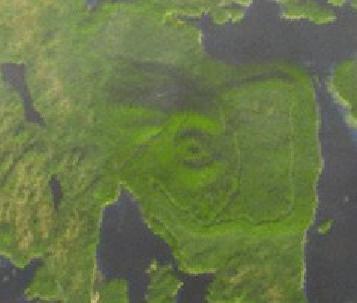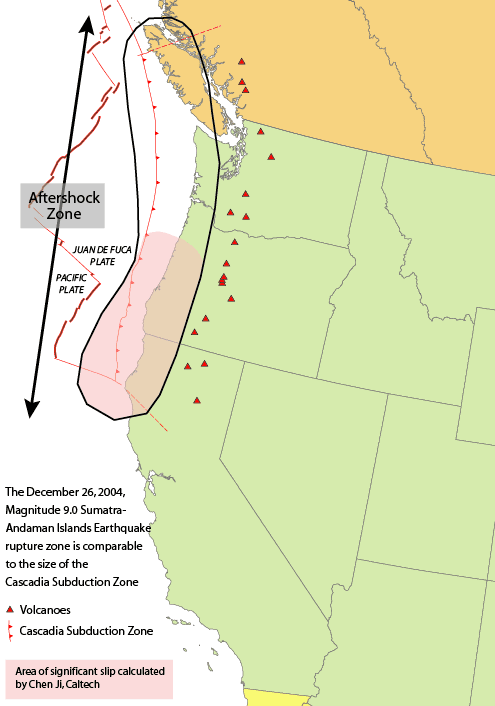|
Volcanic Group
A volcanic group is a stratigraphic group consisting of volcanic strata. They can be in the form of volcanic fields, volcanic complexes and cone A cone is a three-dimensional geometric shape that tapers smoothly from a flat base (frequently, though not necessarily, circular) to a point called the apex or vertex. A cone is formed by a set of line segments, half-lines, or lines con ... clusters. Notable volcanic groups See also * * * * * * * References {{reflist Volcanic landforms Volcanoes ... [...More Info...] [...Related Items...] OR: [Wikipedia] [Google] [Baidu] |
Stratigraphy
Stratigraphy is a branch of geology concerned with the study of rock (geology), rock layers (Stratum, strata) and layering (stratification). It is primarily used in the study of sedimentary rock, sedimentary and layered volcanic rocks. Stratigraphy has three related subfields: lithostratigraphy (lithologic stratigraphy), biostratigraphy (biologic stratigraphy), and chronostratigraphy (stratigraphy by age). Historical development Catholic priest Nicholas Steno established the theoretical basis for stratigraphy when he introduced the law of superposition, the principle of original horizontality and the principle of lateral continuity in a 1669 work on the fossilization of organic remains in layers of sediment. The first practical large-scale application of stratigraphy was by William Smith (geologist), William Smith in the 1790s and early 19th century. Known as the "Father of English geology", Smith recognized the significance of Stratum, strata or rock layering and the importance ... [...More Info...] [...Related Items...] OR: [Wikipedia] [Google] [Baidu] |
Daisetsuzan Volcanic Group
The is a volcanic group of peaks arranged around the wide caldera in Hokkaidō, Japan. In the Ainu language it is known as ''Nutapukaushipe'' (which means "the mountain above the river"),Geographical Survey Institute website , last access 1 July 2008. ''Nutaku Kamushupe'', or ''Optateske''. These peaks are the highest in Hokkaidō. The group lends its name to the in which the volcanic group is located. Geography The volcanic group lies at the north end of the Daisetsu-Tokachi < ...[...More Info...] [...Related Items...] OR: [Wikipedia] [Google] [Baidu] |
Mount Edziza Volcanic Complex
The Mount Edziza volcanic complex is a large and potentially active north-south trending complex volcano in Stikine Country, northwestern British Columbia, Canada, located southeast of the small community of Telegraph Creek. It occupies the southeastern portion of the Tahltan Highland, an upland area of plateau and lower mountain ranges, lying east of the Boundary Ranges and south of the Inklin River, which is the east fork of the Taku River. As a volcanic complex, it consists of many types of volcanoes, including shield volcanoes, calderas, lava domes, stratovolcanoes, and cinder cones. Most of the Mount Edziza volcanic complex is encompassed within a large provincial park called Mount Edziza Provincial Park. Named after Mount Edziza, this park was established in 1972 to preserve the volcanic and cultural treasures unique to the northern British Columbia area. The Mount Edziza volcanic complex is remote, and, without roads, accessible only along trails. The easiest access is fr ... [...More Info...] [...Related Items...] OR: [Wikipedia] [Google] [Baidu] |
Monti Della Tolfa
The Monti della Tolfa (or Tolfa Mountains) are a volcanic group in the Anti-Apennines of the northern part of the Lazio region of Central Italy. They are bounded by the Tyrrhenian Sea coast to the west, by the Monti Sabatini to the east, and by the Monti Cimini and the Mignone river to the north. Tolfa and Allumiere are the principal towns. The highest peak is the Monte Maggiore (633 m above sea level). The Monti della Tolfa consists mostly of trachytes formed during the Eocene and the early Pleistocene. The mountains are an important source of alunite, from which alum is extracted. The mineral was discovered there in 1461, and extensively mined until the mine closed in 1941, after almost 500 years; for much of this time it was the principal source of alum in Europe. The Tolfetano The Tolfetano or Cavallo Tolfetano is a breed of horse from the northern part of the Lazio region of Italy. It is indigenous to the Monti della Tolfa range of hills which lie within the Maremm ... [...More Info...] [...Related Items...] OR: [Wikipedia] [Google] [Baidu] |
Milbanke Sound Group
The Milbanke Sound Group, also called the Milbanke Sound Cones, is an enigmatic group of five small basaltic volcanoes in the Kitimat Ranges of the Coast Mountains in British Columbia, Canada. Named for Milbanke Sound, this volcanic group straddles on at least four small islands (three of which are uninhabited), including Swindle, Price, Lady Douglas and Lake Island. Not much is known about this group of volcanoes and they remain undated. However, they all likely formed in the past 10,000 years after the last glacial period as evidenced by a small amount of erosion. The age of the most recent volcanic activity is also unknown. Most of the Milbanke Sound Cones are covered by mature forest. Kitasu Hill and Helmet Peak are the only two cones that are officially named. This group of volcanoes is unlike many other volcanic groups in Canada as it resides on islands instead of on the mainland. The volcanoes form a northwest-southeast trend along the British Columbia Coast. To the wes ... [...More Info...] [...Related Items...] OR: [Wikipedia] [Google] [Baidu] |
Mount Meager Massif
The Mount Meager massif is a group of volcanic peaks in the of the Coast Mountains in southwestern British Columbia, Canada. Part of the Cascade Volcanic Arc of western North America, it is located north of Vancouver at the northern end of the Pemberton Valley and reaches a maximum elevation of . The massif is capped by several eroded volcanic edifices, including , volcanic plugs and overlapping piles of lava flows; these form at least six major summits including Mount Meager which is the second highest of the massif. The Garibaldi Volcanic Belt (GVB) has a long history of eruptions and poses a threat to the surrounding region. Any volcanic hazard ranging from landslides to eruptions could pose a significant risk to humans and wildlife. Although the massif has not erupted for more than 2,000 years, it could produce a major eruption; if this were to happen, relief efforts would be quickly organized. Teams such as the Interagency Volcanic Event Notification Plan (IVENP) are ... [...More Info...] [...Related Items...] OR: [Wikipedia] [Google] [Baidu] |
Lomonosov Group
Lomonosov Group (russian: Группа Ломоносова) is a volcanic group of cinder cones located in the southern part of Paramushir Island, Kuril Islands, Russia. See also * List of volcanoes in Russia This is a list of active and extinct volcanoes in Russia. European Russia Kamchatka Volcanoes of the Kamchatka Peninsula of the northwestern Pacific Ocean and the Russian Far East. Kuril Islands Volcanoes of the Kuril Islands, in the nor ... References * Paramushir Cinder cones Volcanic groups Volcanoes of the Kuril Islands {{SakhalinOblast-geo-stub ... [...More Info...] [...Related Items...] OR: [Wikipedia] [Google] [Baidu] |
Karpinsky Group
The Karpinsky Group (russian: Вулкан Карпинского) is a volcanic group located at the southern end of Paramushir Island, Kuril Islands, Russia. The group is capped by two gently sloping cones rising to a height of 1,326 m. They are composed of andesites and andesite-basalts. In the two craters there are fumaroles and fountains of liquid sulfur. The last major, and only historic, eruption was in 1952. The sides of the volcanoes have been heavily glaciated leaving a number of cirques which were initially thought to be eroded craters. The volcanoes were named after the geologist Aleksandr Petrovich Karpinsky. See also * List of volcanoes in Russia References * "Карпинского Вулкан"''Great Soviet Encyclopedia The ''Great Soviet Encyclopedia'' (GSE; ) is one of the largest Russian-language encyclopedias, published in the Soviet Union from 1926 to 1990. After 2002, the encyclopedia's data was partially included into the later ''Bolshaya rossiy ... [...More Info...] [...Related Items...] OR: [Wikipedia] [Google] [Baidu] |
Kaiserstuhl (Baden-Württemberg)
The Kaiserstuhl (, "Emperor’s Chair") is a range of hills in the state of Baden-Württemberg in southwest Germany with a maximum height of . It is of volcanic origin and located in the southwest of the state in the counties of Emmendingen and Breisgau-Hochschwarzwald. In terms of natural regions it is considered to be a part of the Upper Rhine Plain. Name The name "Kaiserstuhl" is believed to refer to King Otto III, who held court near Sasbach on 22 December 994. From then on, the whole hill range was called the Königsstuhl – the King’s Chair. In May 996, Otto III was crowned Emperor and the King’s Chair eventually became the Emperor’s Chair – "Kaiserstuhl". Reliable sources mention the name Kaiserstuhl only as early as 1304 and historians thus suppose that the term Kaiserstuhl was not coined until the 13th century. Geography Location The Kaiserstuhl is situated in South Baden, mainly in Breisgau-Hochschwarzwald county or district. However, the smaller norther ... [...More Info...] [...Related Items...] OR: [Wikipedia] [Google] [Baidu] |
Jemez Mountains
The Jemez Mountains are a group of mountains in Rio Arriba, Sandoval, and Los Alamos counties, New Mexico, United States. Numerous Puebloan Indian tribes have lived in the Jemez Mountains region since before the Spanish arrived in New Mexico. The Pueblo Indians of this region are the Towa-speaking Jemez people for which this mountain range is named, the Keres-speaking Keresan Indians, and the Tewa-speaking Tewa Indians. Tsąmpiye'ip'įn is the Tewa language name for the Jemez Mountains. The highest point in the range is Chicoma Mountain (also spelled as Tschicoma or Tchicoma) at an elevation of . The town of Los Alamos and the Los Alamos National Laboratory adjoin the eastern side of the range while the town of Jemez Springs is to the west. Pajarito Mountain Ski Area is the only ski area in the Jemez. New Mexico State Highway 4 is the primary road that provides vehicular access to locations in the Jemez Mountains. Geology The Jemez Mountains lie to the north of the Alb ... [...More Info...] [...Related Items...] OR: [Wikipedia] [Google] [Baidu] |
Hakkōda Mountains
The are an active volcanic complex in south-central Aomori Prefecture, Japan, in Towada-Hachimantai National Park. Often called or simply , the mountains are collectively listed as one of the 100 Famous Japanese Mountains. Its highest peak, Mount Ōdake, lies southeast of central Aomori and west of central Towada and has an elevation of . The Hakkōda Mountains are a part Ōu Mountains which make up part of the Northeastern Japan Arc, a segment of the Pacific Ring of Fire. The volcanic complex consists of fourteen stratovolcanoes and lava domes arranged into two volcanic groups. The Northern Hakkōda Volcanic Group emerges from the rim of an caldera that dates back to the Pleistocene. The Southern Hakkōda Volcanic Group predates the caldera. The Hakkōda Mountains attract many climbers, skiers, and sightseers. The mountains offer extensive backcountry skiing in the winter and early spring. There is a lift, the Hakkōda Ropeway in the northern Hakkōda Mountains used by v ... [...More Info...] [...Related Items...] OR: [Wikipedia] [Google] [Baidu] |
Gambier Group
The Gambier Group is an Early Cretaceous aged geologic group in the southern Coast Mountains of British Columbia, Canada. It was formed on the easternmost point of the Wrangellia Terrane as a volcanic arc about 100 million years ago along a west-to southwest-dipping subduction zone. This prehistoric volcanic arc is generally referred to as the Gambier arc or Gambier volcanic arc. See also *Volcanism of Western Canada * Flute Summit *Piccolo Summit *Whistler Mountain Whistler Mountain is a mountain in the Fitzsimmons Range of the Pacific Ranges of the Coast Mountains, located on the northwestern edge of Garibaldi Provincial Park. It is the location of the Whistler-Blackcomb, Whistler-Blackcomb ski resort an ... References Volcanism of British Columbia Cretaceous volcanism Volcanic arcs Volcanic groups {{BritishColumbiaCoast-geo-stub ... [...More Info...] [...Related Items...] OR: [Wikipedia] [Google] [Baidu] |
%2C_SRTM-1.jpg)



